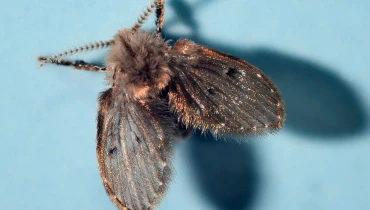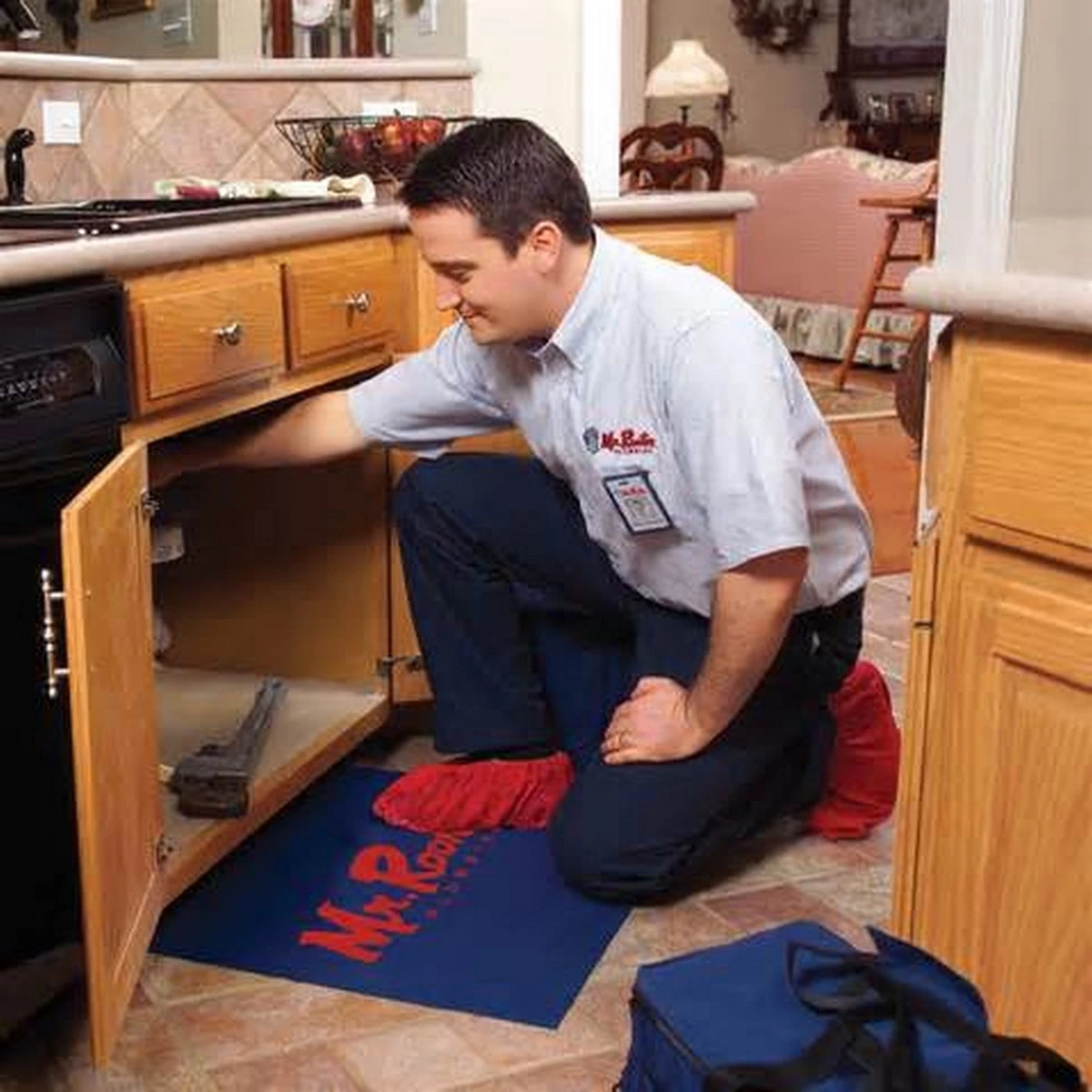
If you’re here, you're probably unlucky enough to have a drain fly infestation. Though these sink flies are relatively harmless, they don’t come without risks. For those with pre-existing health conditions, they can cause asthmatic symptoms and even myiasis—a parasitic infection in which larvae use human tissue as a breeding ground. While myiasis is incredibly rare, stopping flies from proliferating as early as possible is in all homeowners’ best interest. If you’re wondering how to get rid of drain flies, we’ve got you covered.
In this article, we’ll focus on:
- What drain flies are
- Reasons why you may find yourself with a drain fly infestation
- DIY methods for how to get rid of drain flies
- Preventing flies from reoccurring
In addition, we’ll give you guidance on when a drain fly problem warrants calling in our team at Mr. Rooter Plumbing.
What Are Drain Flies?
There is only a single species of drain flies, known scientifically as Psychodidae. Also known as sewer flies, filter flies and moth flies thanks to their fuzzy moth-like appearance, these insects vary in both color and size. Adult drain flies are typically between 0.05 inches and 0.20 inches long and may be either brown, gray or black in color. They’re also poor fliers, so you won’t find them far from their breeding ground.
Though the flies have a fairly short life cycle, with adults living only about 2 weeks at most, female drain flies lay hundreds of eggs in just two days, leading to a continuous infestation. This is a problem you don’t want to leave unchecked for long!
What Causes An Infestation Of Drain Flies?

Many homeowners in the United States find drain fly infestations near their kitchen sinks, but they may also be near bathroom drains, floor drains, shower drains, toilet bowls and septic systems. This is because the sludge in drain pipes tends to be a major attractant for drain flies.
As gross as it sounds to us, a sink drain full of organic material, such as food debris and grease, acts as a food source for fly larvae and adult flies. Fly eggs are laid deep within this decaying material, with breathing tube channels connected between the larvae and the surface. Though any amount of debris will attract them, a clog will make a particularly attractive breeding ground due to the presence of stagnant water. Common causes of clogged drains include:
- FOG (fat, oil and grease)
- Hair
- Feminine hygiene products
- Flushable wipes
- Food waste
Clean pipes do not attract flies, so if you have an infestation, this is a sign that your pipes could use a cleaning.
How To Get Rid Of Drain Flies
Here’s the part you came here for—learning how to get rid of drain flies! To remove drain flies, you’ll need to do two things: kill the flies, larvae and eggs, and clean your pipes. There is a wide range of DIY methods to remove drain flies, but not all of them are effective. For example, it is sometimes suggested to pour things like hot water or boiling water, baking soda, white vinegar and a cup of salt or a chemical cleaner down your pipes. These methods should be avoided for a couple of reasons:
- None of these will penetrate the thick sludge buildup where the eggs and larvae live.
- You may damage your pipes. PVC pipes are typically used for sewer lines in newer homes. If you have a clog, boiling water will sit on top of the clog and damage your pipes. Likewise, traditional drain cleaners contain harsh chemicals that can damage all kinds of pipes.
Instead, try these natural solutions:
- Enzyme cleaners. This natural product uses enzymes to break down organic material. Repeated use can break down a clog made up of food waste, human waste or hair, and also target the eggs and larvae within the clog. A pipe brush can also be used to scrub the inside of your pipes and help that enzymatic cleaner do its thing.
- Homemade trap. To trap the adult flies, place a cup of vinegar, ideally a cup of apple cider vinegar, in a bowl. Add some warm water and a few drops of dish soap. This concoction will attract the flies, but the soap will trap them and cause them to drown.
Prevent Needing To Remove Drain Flies In The Future
With most, if not all, of your flies, larvae and eggs killed, it’s time to tackle the situation that attracted them in the first place. Regular plumbing system maintenance is key for keeping them away.
Regular cleaning, pouring an enzymatic cleaner down your pipes every now and then and avoiding putting anything other than water or soap down your kitchen sink will keep your pipes clean. If they were attracted to your shower drain, place a hair catcher in your shower to prevent it from clogging your pipes.
When To Call In The Professionals
If you have a large number of flies, it may be difficult to get on top of the problem using DIY methods alone. While using enzymatic cleaners and homemade traps can mitigate the problem temporarily, tackling a large clog or infestation is best done by a professional plumber.
For large infestations, long-term control and the prevention of future infestations, there’s really nothing as effective as investing in a professional drain cleaning service. This preventative measure will get your pipes cleaner than you ever could on your own.
HydroScrub® Jetting is one of the most effective professional cleaning services available today. This system uses highly pressurized water—we’re talking around 3,500 PSI—to blast all debris within your pipes into the city’s main sewer line. This is the most surefire way to ensure your pipes are as clean as they were when first installed.
To book a professional drain cleaning service, contact your local Mr. Rooter Plumbing today by calling or filling out the service request form on our website. With upfront pricing, no overtime charges and a workmanship and parts guarantee, you can’t go wrong with choosing Mr. Rooter Plumbing for drain cleaning!

